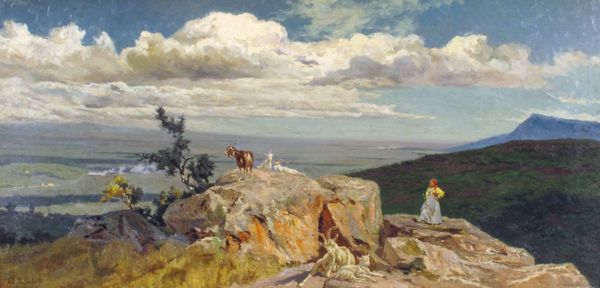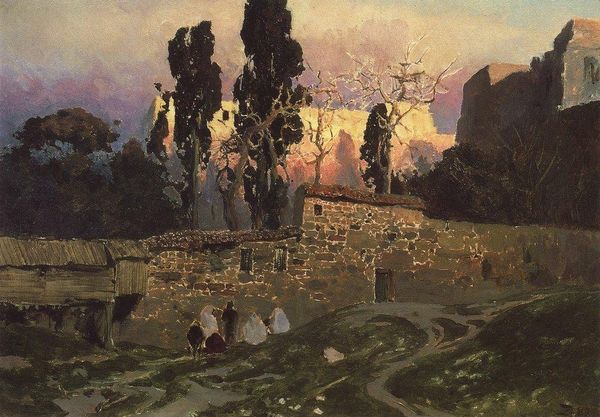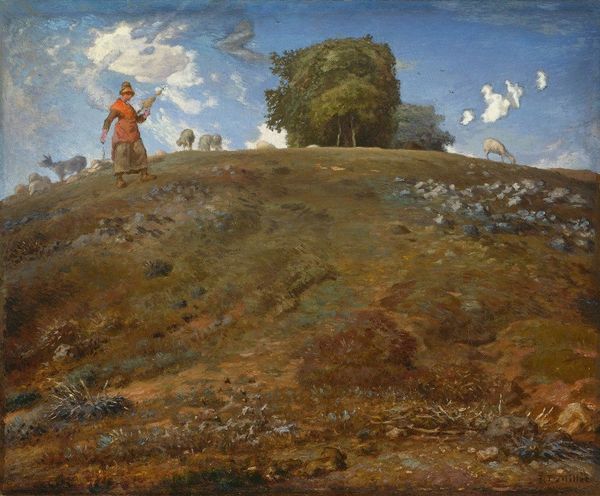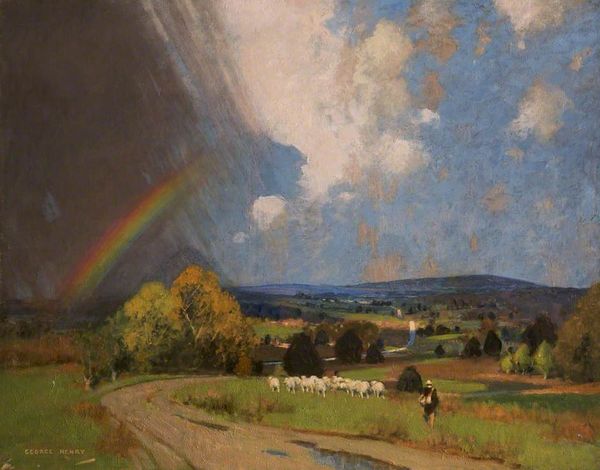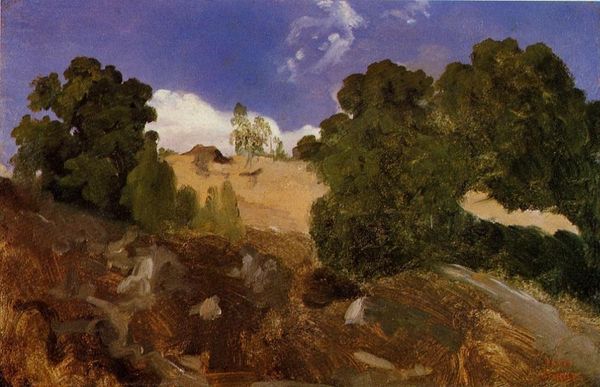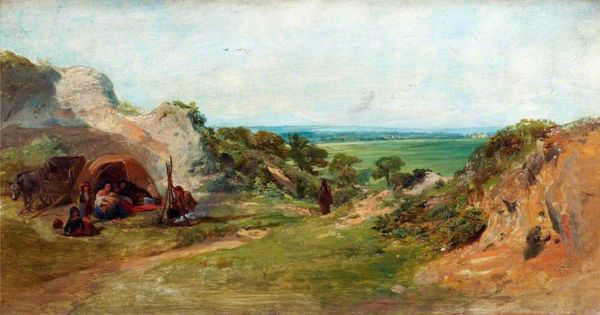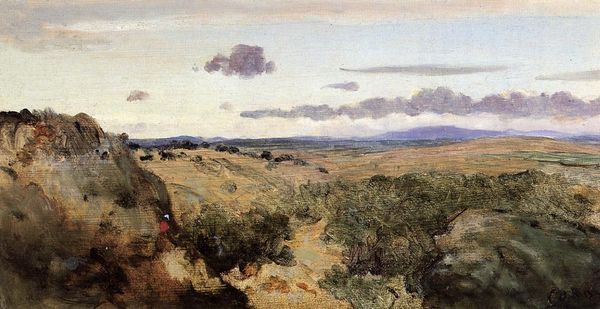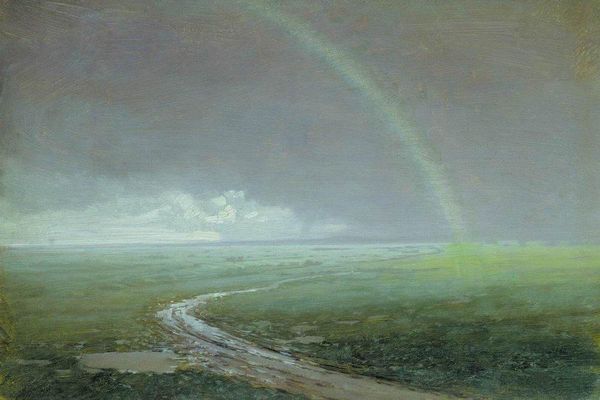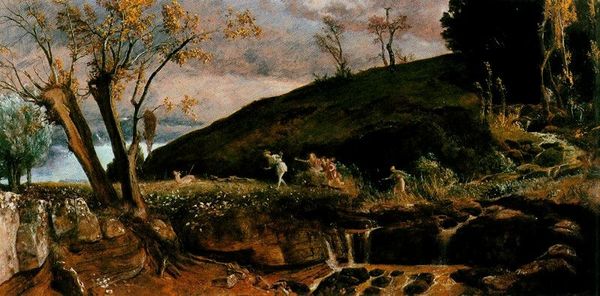
Copyright: Public domain US
Editor: So, here we have Laura Knight's "Spring," painted in 1920 using oil. It strikes me as such a classically English scene, and that rainbow gives it such a romantic quality, even a hint of hope after the war. What do you see in this piece? Curator: Well, locating this painting within its social and historical context reveals a fascinating interplay between tradition and change. Post-World War One, landscape painting served as a powerful means of reaffirming national identity and values. Do you think Knight's choice of such an archetypal scene could be read in that light? Editor: Possibly! The landscape seems idealised... What do you mean by that? Curator: It reflects a conscious effort to depict England as pastoral, unchanging, and resilient. This image works to obscure the socio-political fractures caused by the war, rather presenting a united front rooted in the idealized countryside. The rainbow definitely supports this sense of optimism. It is quite interesting to me the painting is titled "Spring" after such a harsh time of war. Editor: So the idyllic landscape and rainbow almost function as a form of national healing or denial? It's like art providing an escape. Curator: Exactly! And consider who got to enjoy this image, and in what spaces. It was presented for and consumed by specific social groups within a particular museum and gallery setting. Its value lies not just in aesthetics, but in understanding its intended public role. Editor: That gives me a whole new perspective! I was initially drawn in by the charming surface, but now I can see how this work is reflecting bigger historical forces. Thanks! Curator: And that interplay is precisely what makes art history so compelling, isn't it? Looking beyond the surface and uncovering deeper cultural narratives.
Comments
No comments
Be the first to comment and join the conversation on the ultimate creative platform.
